Sp1 transcription factor interaction with accumulated prelamin a impairs adipose lineage differentiation in human mesenchymal stem cells: essential role of sp1 in the integrity of lipid vesicles
- PMID: 23197810
- PMCID: PMC3659691
- DOI: 10.5966/sctm.2011-0010
Sp1 transcription factor interaction with accumulated prelamin a impairs adipose lineage differentiation in human mesenchymal stem cells: essential role of sp1 in the integrity of lipid vesicles
Abstract
Lamin A (LMNA)-linked lipodystrophies may be either genetic (associated with LMNA mutations) or acquired (associated with the use of human immunodeficiency virus protease inhibitors [PIs]), and in both cases they share clinical features such as anomalous distribution of body fat or generalized loss of adipose tissue, metabolic alterations, and early cardiovascular complications. Both LMNA-linked lipodystrophies are characterized by the accumulation of the lamin A precursor prelamin A. The pathological mechanism by which prelamin A accumulation induces the lipodystrophy associated phenotypes remains unclear. Since the affected tissues in these disorders are of mesenchymal origin, we have generated an LMNA-linked experimental model using human mesenchymal stem cells treated with a PI, which recapitulates the phenotypes observed in patient biopsies. This model has been demonstrated to be a useful tool to unravel the pathological mechanism of the LMNA-linked lipodystrophies, providing an ideal system to identify potential targets to generate new therapies for drug discovery screening. We report for the first time that impaired adipogenesis is a consequence of the interaction between accumulated prelamin A and Sp1 transcription factor, sequestration of which results in altered extracellular matrix gene expression. In fact, our study shows a novel, essential, and finely tuned role for Sp1 in adipose lineage differentiation in human mesenchymal stem cells. These findings define a new physiological experimental model to elucidate the pathological mechanisms LMNA-linked lipodystrophies, creating new opportunities for research and treatment not only of LMNA-linked lipodystrophies but also of other adipogenesis-associated metabolic diseases.
Figures
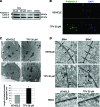
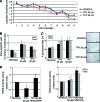
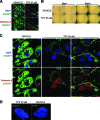
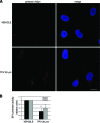
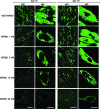
References
-
- Mounkes LC, Stewart CL. Aging and nuclear organization: Lamins and progeria. Curr Opin Cell Biol. 2004;16:322–327. - PubMed
-
- Burke B, Stewart CL. The laminopathies: The functional architecture of the nucleus and its contribution to disease. Annu Rev Genomics Hum Genet. 2006;7:369–405. - PubMed
-
- Hegele RA. Monogenic forms of insulin resistance: Apertures that expose the common metabolic syndrome. Trends Endocrinol Metab. 2003;14:371–377. - PubMed
-
- Mattout A, Dechat T, Adam SA, et al. Nuclear lamins, diseases and aging. Curr Opin Cell Biol. 2006;18:335–341. - PubMed
-
- Shackleton S, Lloyd DJ, Jackson SN, et al. LMNA, encoding lamin A/C, is mutated in partial lipodystrophy. Nat Genet. 2000;24:153–156. - PubMed
Publication types
MeSH terms
Substances
LinkOut - more resources
Full Text Sources
Molecular Biology Databases
Research Materials
Miscellaneous

